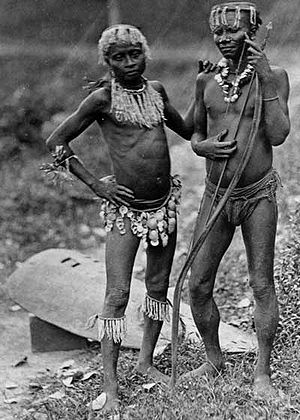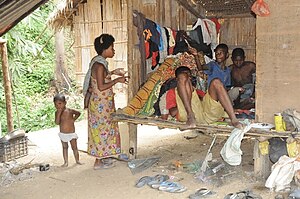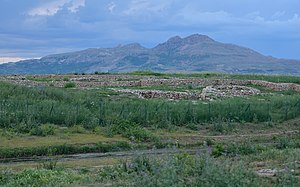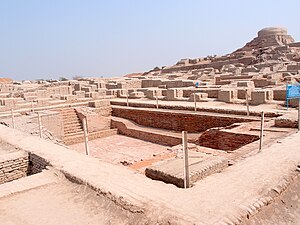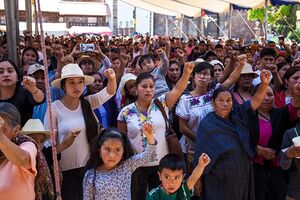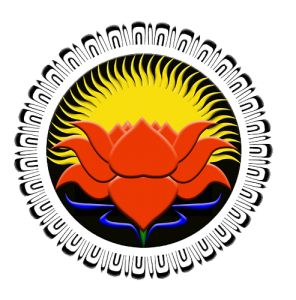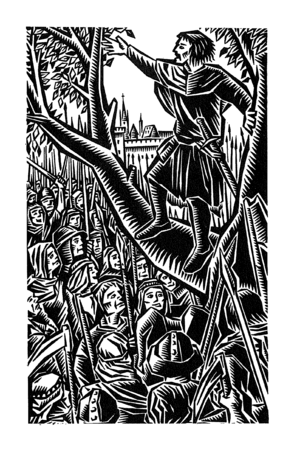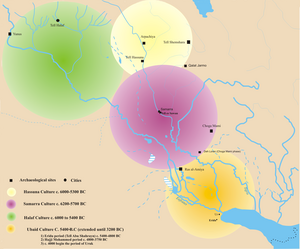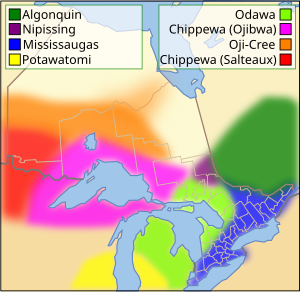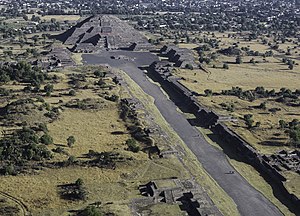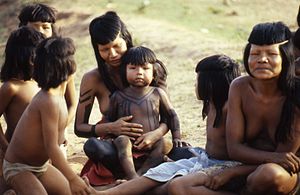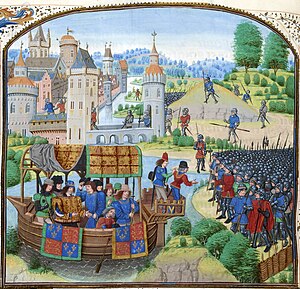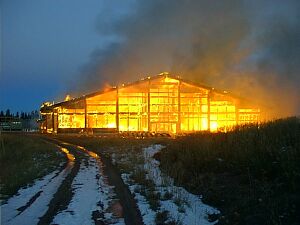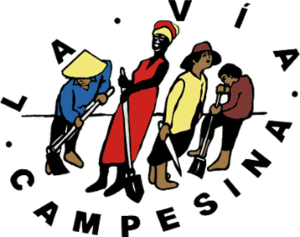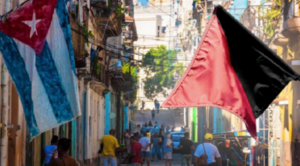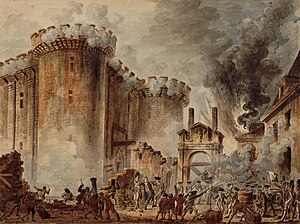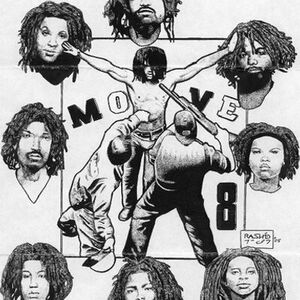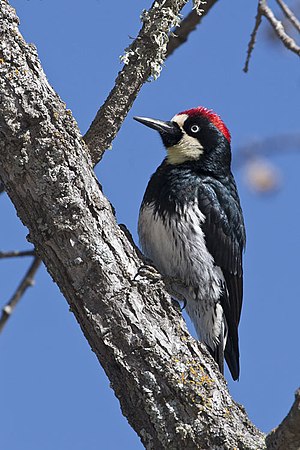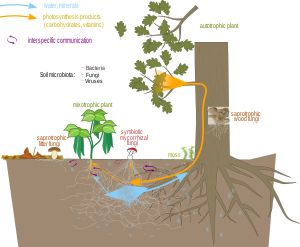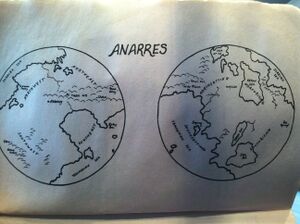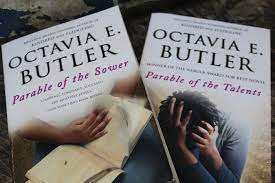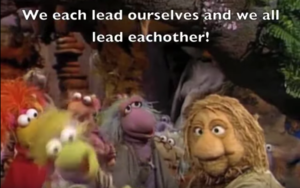Main Page: Difference between revisions
No edit summary |
No edit summary |
||
| (40 intermediate revisions by 2 users not shown) | |||
| Line 2: | Line 2: | ||
[[File:Spreadanarchy.png]] | [[File:Spreadanarchy.png]] | ||
[[File:Abolishthepolice.jpg|thumb|[https://www.anarchistagency.com/commentary/this-is-anarchy-eight-ways-the-black-lives-matter-and-justice-for-george-floyd-uprisings-reflect-anarchist-ideas-in-action/]]] | [[File:Abolishthepolice.jpg|thumb|[https://www.anarchistagency.com/commentary/this-is-anarchy-eight-ways-the-black-lives-matter-and-justice-for-george-floyd-uprisings-reflect-anarchist-ideas-in-action/]]] | ||
From Greek words ''an'' (without) and ''archos'' (ruler), '''''anarchy''''' describes situations without coercive hierarchy. Looking at and beyond self-proclaimed anarchist movements, we accept Maia Ramnath's call to "locate the Western anarchist tradition as one contextually specific manifestation among a larger-indeed global-tradition of antiauthoritarian, egalitarian thought/praxis".<ref>Maia Ramnath, ''Decolonizing Anarchism: An Antiauthoritarian History of India's Liberation Struggle'' (AK Press, 2011), 6.</ref> We take our name from Colin Ward's 1973 book ''[[Anarchy in Action]]''. | |||
This wiki is written by volunteers, and we encourage you to check our work and help us improve it. Send corrections or account requests. If you're a member of an organization or struggle described on this website, send information on current campaigns. | |||
This wiki is | |||
[[File:Nofreedom.webp|thumb|Anarchist banners at World Conference Against Racism, Durban, 2001.[https://thisisafrica.me/politics-and-society/ways-of-life-3-indigenous-anarchism/]]] | [[File:Nofreedom.webp|thumb|Anarchist banners at World Conference Against Racism, Durban, 2001.[https://thisisafrica.me/politics-and-society/ways-of-life-3-indigenous-anarchism/]]] | ||
[[File:Fifthsacredthing.webp|thumb|"Fifth Sacred Thing" by Jessica Perlstein, portraying [[San Francisco (The Fifth Sacred Thing)]].]] | [[File:Fifthsacredthing.webp|thumb|"Fifth Sacred Thing" by Jessica Perlstein, portraying [[San Francisco (The Fifth Sacred Thing)]].]] | ||
[[File:Bolobolo.png|thumb|a proposed "bolo" (source: https://theanarchistlibrary.org/library/p-m-bolo-bolo)]] | |||
[[File:Clifford-harper-alternative-dream.png|thumb|Clifford Harper portrays an anarchist commune in ''Radical Technology'']] | [[File:Clifford-harper-alternative-dream.png|thumb|Clifford Harper portrays an anarchist commune in ''Radical Technology'']] | ||
| Line 33: | Line 33: | ||
==Anarchist== | ==Anarchist and Anti-Authoritarian== | ||
[[File:Makhno group.jpg|thumbnail| Nestor Makhno with members of the anarchist [[Revolutionary Ukraine|Revolutionary Insurrectionary Army of Ukraine]]]] | [[File:Makhno group.jpg|thumbnail| Nestor Makhno with members of the anarchist [[Revolutionary Ukraine|Revolutionary Insurrectionary Army of Ukraine]]]] | ||
| Line 39: | Line 39: | ||
[[File:Korea001.jpg|thumbnail|[[Shinmin Prefecture]]]] | [[File:Korea001.jpg|thumbnail|[[Shinmin Prefecture]]]] | ||
[[File:S-d-jpeg-12.jpeg|thumbnail|Collectivized textile factory in | [[File:S-d-jpeg-12.jpeg|thumbnail|Collectivized textile factory in [[Revolutionary Spain]].]] | ||
[[Revolutionary Spain]] | |||
[[File:IMG_0497.JPG|thumbnail| [[Zapatista-run Chiapas]]]] | [[File:IMG_0497.JPG|thumbnail| [[Zapatista-run Chiapas]]]] | ||
| Line 85: | Line 76: | ||
[[File:Knossos - North Portico 02.jpg|thumb|[[Minoan Crete]]]] | [[File:Knossos - North Portico 02.jpg|thumb|[[Minoan Crete]]]] | ||
[[File:Borneo Penan Elders (6331744398).jpg|thumb|[[Penan]]]] | |||
[[File:Piaroa Indianer.JPG|thumb|Huottüją/De'aruhua or [[Piaroa]] people]] | |||
[[File:Mohenjo-daro.jpg|thumb|[[Indus Valley Civilization]]]] | [[File:Mohenjo-daro.jpg|thumb|[[Indus Valley Civilization]]]] | ||
| Line 107: | Line 102: | ||
[[File:Taborites.png|thumbnail|[[Taborite communes]]]] | [[File:Taborites.png|thumbnail|[[Taborite communes]]]] | ||
[[File:Mesopotamia 6000-4500.png|thumb|[[Neolithic Mesopotamia]]]] | |||
[[File:Mosuo girls.jpg|thumb|[[Mosuo]]]] | [[File:Mosuo girls.jpg|thumb|[[Mosuo]]]] | ||
| Line 127: | Line 124: | ||
[[File:Image taken from page 14 of 'Report of an expedition down the Zuni and Colorado Rivers by Captain L. Sitgreaves (11042155095) (cropped).jpg|thumb|[[Zuni]]]] | [[File:Image taken from page 14 of 'Report of an expedition down the Zuni and Colorado Rivers by Captain L. Sitgreaves (11042155095) (cropped).jpg|thumb|[[Zuni]]]] | ||
[[File:Semai man1.jpg|thumb|[[Semai people]]]] | |||
[[Abahlali baseMjondolo]], | [[Abahlali baseMjondolo]], 115,000 members as of 2022 | ||
[[Andamanese]] | [[Andamanese]] | ||
| Line 187: | Line 185: | ||
[[Konkomba]] | [[Konkomba]] | ||
[[Kurdistan democratic confederalists|Rojava]], 2012-present, 2.5 million people | |||
[[Kuna people]] | [[Kuna people]] | ||
| Line 204: | Line 204: | ||
[[Minangkabau]] | [[Minangkabau]] | ||
[[Minoan Crete]] | [[Minoan Crete]] | ||
[[Neolithic Mesopotamia]] | |||
[[Southeast Matriarchies|Muscogee]] | [[Southeast Matriarchies|Muscogee]] | ||
| Line 215: | Line 217: | ||
[[Nishnaabeg]] | [[Nishnaabeg]] | ||
[[Penan]] | |||
[[Piaroa]] | [[Piaroa]] | ||
| Line 220: | Line 224: | ||
[[Peiligang culture]], 7000-5000 BCE | [[Peiligang culture]], 7000-5000 BCE | ||
[[ | [[Revolutionary Spain]], 1936-9, 3.2 million people | ||
[[Revolutionary Ukraine]], 1918-1921, 7 million people | |||
[[San]] (including !Kung) | [[San]] (including !Kung) | ||
| Line 227: | Line 233: | ||
[[Sarvodaya Shramadana Movement]] | [[Sarvodaya Shramadana Movement]] | ||
[[Semai people]] | |||
[[Seminole people]] | [[Seminole people]] | ||
[[Shinmin Prefecture]], 1929-1931, 2 million people | |||
[[Taborite communes]], 15th century | [[Taborite communes]], 15th century | ||
| Line 251: | Line 261: | ||
[[File:280px-San Gimignano (1).jpg|thumbnail|[[Medieval commune]]]] | [[File:280px-San Gimignano (1).jpg|thumbnail|[[Medieval commune]]]] | ||
[[File:Familienleben.jpg|thumb|[[Canela people]]]] | |||
[[Aboriginal Australians]] | [[Aboriginal Australians]] | ||
[[Canela people]] | |||
[[Early Christians]] | [[Early Christians]] | ||
| Line 271: | Line 285: | ||
[[Medieval commune]] | [[Medieval commune]] | ||
[[Palmares]] | |||
[[Parisian sections]] | [[Parisian sections]] | ||
| Line 321: | Line 337: | ||
[[Tonga people]] | [[Tonga people]] | ||
| Line 355: | Line 370: | ||
==Anarchist== | ==Anarchist and Anti-Authoritarian== | ||
[[File:Entrée de Christiania.jpg|thumbnail|Entrance to [[Christiania]]]] | [[File:Entrée de Christiania.jpg|thumbnail|Entrance to [[Christiania]]]] | ||
| Line 367: | Line 379: | ||
[[Christiania]], 1971-present, 900 people | [[Christiania]], 1971-present, 900 people | ||
[[Diggers|George's Hill (Diggers)]], 1649, 40 people | |||
[[Faslane Peace Camp]], 1982-present | [[Faslane Peace Camp]], 1982-present | ||
| Line 372: | Line 386: | ||
[[Free Republic of Wendland]], 1980, 5,000 people | [[Free Republic of Wendland]], 1980, 5,000 people | ||
[[ | [[Guangzhou commune]], 1921-1923 | ||
[[Greenham Common Women's Peace Camp]] | [[Greenham Common Women's Peace Camp]] | ||
[[Life and Labor Commune]], 1921-1930, nearly 1,000 people | [[Life and Labor Commune]], 1921-1930, nearly 1,000 people | ||
[[Village Alternatif, Anticapitalist et AntiGuerres]], 2003, thousands of people | [[Village Alternatif, Anticapitalist et AntiGuerres]], 2003, thousands of people | ||
==Autonomous== | ==Autonomous== | ||
| Line 414: | Line 429: | ||
''"If we had surrendered, if we had sold ourselves, we would no longer have been poor, but others would have continued to be so."'' -Subcomandante Marcos<ref>Subcomandante Marcos, "Why We Chose the Weapon of Resistance" in ''Our Word is Our Weapon'' (New York: Seven Stories Press, 2001), 160.</ref> | ''"If we had surrendered, if we had sold ourselves, we would no longer have been poor, but others would have continued to be so."'' -Subcomandante Marcos<ref>Subcomandante Marcos, "Why We Chose the Weapon of Resistance" in ''Our Word is Our Weapon'' (New York: Seven Stories Press, 2001), 160.</ref> | ||
''"People have done horizontal, or non-hierarchical, organization all their lives. It is already there in my culture and the way Palestinian activism has worked."'' -Beesan Ramadan<ref>Joshua Stephens, “Palestinian Anarchists in Conversation: Recalibrating anarchism in a colonized country,” ''Institute for Anarchist Studies'', 19 July 2013, | ''"People have done horizontal, or non-hierarchical, organization all their lives. It is already there in my culture and the way Palestinian activism has worked."'' -Beesan Ramadan<ref>Joshua Stephens, “Palestinian Anarchists in Conversation: Recalibrating anarchism in a colonized country,” ''Institute for Anarchist Studies'', 19 July 2013, https://anarchiststudies.org/palestinian-anarchists/.</ref> | ||
''"We take inspiration from the Luddites, Levellers, Diggers, the Autonome squatter movement, ALF, the Zapatistas, and the little people -- those mischievous elves of lore."'' -[[Earth Liberation Front]]<ref>https://www.iiipublishing.com/politics/elf.htm.</ref> | ''"We take inspiration from the Luddites, Levellers, Diggers, the Autonome squatter movement, ALF, the Zapatistas, and the little people -- those mischievous elves of lore."'' -[[Earth Liberation Front]]<ref>https://www.iiipublishing.com/politics/elf.htm.</ref> | ||
==Anarchist== | ==Anarchist and Anti-Authoritarian== | ||
[[File:ChicagoAnarchists.jpg|thumbnail|Chicago anarchists advanced the cause of the 8-hour day and started May Day. See [[The Haymarket Martyrs]].]] | [[File:ChicagoAnarchists.jpg|thumbnail|Chicago anarchists advanced the cause of the 8-hour day and started May Day. See [[The Haymarket Martyrs]].]] | ||
| Line 429: | Line 444: | ||
[[File:Conspiracy of Fire Nuclei, Logo.jpg|thumb|[[Conspiracy of Cells of Fire]]]] | [[File:Conspiracy of Fire Nuclei, Logo.jpg|thumb|[[Conspiracy of Cells of Fire]]]] | ||
[[Anarchists in the Russian Revolution]] | [[Anarchists in the Russian Revolution]] | ||
| Line 457: | Line 466: | ||
[[1919 Peruvian general strike]] | [[1919 Peruvian general strike]] | ||
[[File:Interfauna-raid-1990.jpg|thumb|[[Animal Liberation Front]]]] | [[File:Interfauna-raid-1990.jpg|thumb|[[Animal Liberation Front]]]] | ||
| Line 501: | Line 508: | ||
[[File:Wattsriots-burningbuildings-loc.jpg|thumbnail|[[Watts Rebellion]] of 1965]] | [[File:Wattsriots-burningbuildings-loc.jpg|thumbnail|[[Watts Rebellion]] of 1965]] | ||
[[File:Waldenser-Wappen.png|thumb|[[Waldensians]]]] | |||
[[US anti-nuclear movement|Abalone Alliance]] | [[US anti-nuclear movement|Abalone Alliance]] | ||
| Line 509: | Line 518: | ||
[[Alter-globalization movement]] | [[Alter-globalization movement]] | ||
[[Anarchy in the German Revolution]] | |||
[[Anarchy in the Russian Revolution]] | [[Anarchy in the Russian Revolution]] | ||
| Line 529: | Line 540: | ||
[[Community taro patches]] | [[Community taro patches]] | ||
[[Conspiracy of Cells of Fire]] | |||
[[US anti-nuclear movement|Clamshell Alliance]] | [[US anti-nuclear movement|Clamshell Alliance]] | ||
| Line 541: | Line 554: | ||
[[German Anti-Fascism]] | [[German Anti-Fascism]] | ||
[[The Haymarket Martyrs|Haymarket Martyrs]] | |||
[[Informal Anarchist Federation]] | |||
[[Italian Anti-Fascism]] | [[Italian Anti-Fascism]] | ||
| Line 581: | Line 598: | ||
[[The May-June Revolt in France, 1968]] | [[The May-June Revolt in France, 1968]] | ||
[[Waldensians]] | |||
[[Watts Rebellion]] | [[Watts Rebellion]] | ||
| Line 631: | Line 650: | ||
[[Anabaptists]] | [[Anabaptists]] | ||
[[Barcelona en Comú]] | |||
[[Black Reconstruction]] | [[Black Reconstruction]] | ||
| Line 694: | Line 715: | ||
Cantonalist Revolt of 1873-1874 | Cantonalist Revolt of 1873-1874 | ||
= | =[[Organizations|Organizations]]= | ||
[[File:Cooperation-jackson-logo.png.png|thumb|[[Cooperation Jackson]]]] | |||
[[File:Bruderhof.jpg|thumbnail|Self-managed [[Bruderhof factories]].]] | |||
[[File:Up9thCommonGround7Feb06ClothesTent.jpg|thumbnail|[[Common Ground Collective]] distribution center]] | |||
[File:Iwwlogo.svg| [[Industrial Workers of the World]] | |||
[[File:ACT UP logo.png|thumb|[[ACT UP]]]] | |||
[[File:Move.jpeg|thumb|[[MOVE]]]] | |||
[[File:Freedom Summer.jpg|thumbnail|Freedom Summer, a 1964 campaign of the [[Student Nonviolent Coordinating Committee]], an anti-authoritarian civil rights group.]] | [[File:Freedom Summer.jpg|thumbnail|Freedom Summer, a 1964 campaign of the [[Student Nonviolent Coordinating Committee]], an anti-authoritarian civil rights group.]] | ||
[[File:02Jane 400.jpg.jpg|thumbnail|[[Jane]] underground abortion service.]] | [[File:02Jane 400.jpg.jpg|thumbnail|[[Jane]] underground abortion service.]] | ||
[[File:Bandiera2.jpg|thumbnail|[[Arditi del Popolo]]]] | |||
[[File:CRC statement.jpeg|thumbnail|[[Combahee River Collective]]]] | [[File:CRC statement.jpeg|thumbnail|[[Combahee River Collective]]]] | ||
[[File:Psu.jpg|thumbnail|[[Philly Stands Up]], a transformative justice collective.]] | [[File:Psu.jpg|thumbnail|[[Philly Stands Up]], a transformative justice collective.]] | ||
[[File:Waldenser-Wappen.jpg|thumb|[[Waldensians]]]] | [[File:Waldenser-Wappen.jpg|thumb|[[Waldensians]]]] | ||
[[File:Flag of Yippies.svg|thumb|[[Yippies]]]] | [[File:Flag of Yippies.svg|thumb|[[Yippies]]]] | ||
[[ | ''"[[Student Nonviolent Coordinating Committee|SNCC]] without knowing about anarchism as philosophy embodied the characteristics of anarchism."'' -Howard Zinn<ref>Howard Zinn, "Anarchism Shouldn't Be a Dirty Word," ''AlterNet'', 16 May, 2008, http://www.alternet.org/story/85427/howard_zinn%3A_anarchism_shouldn't_be_a_dirty_word.</ref> | ||
''"The real question at issue is not organization versus non-organization, but rather, what kind of organization. What different kinds of anarchist organizations have in common is that they are developed organically from below, not engineered into existence from above."'' -Murray Bookchin<ref>Murray Bookchin, "Anarchy and Organization", ''Libcom.org'', http://libcom.org/library/anarchy-organization-murray-bookchin.</ref> | |||
==[[Organizations#Active|Active Anarchist/Anti-Authoritarian]]== | |||
==[[Organizations#Historical|Historical Anarchist/Anti-Authoritarian]]== | |||
==[[Organizations#Autonomous|Autonomous]]== | |||
==[[Organizations#Unsorted|Unsorted]]== | |||
[[ | |||
=Everyday Anarchy= | =Everyday Anarchy= | ||
| Line 1,331: | Line 752: | ||
''"If there’s a line to get on a crowded bus, do you wait your turn and refrain from elbowing your way past others even in the absence of police? If you answered 'yes', then you are used to acting like an anarchist!"'' -David Graeber<ref>David Graeber, "Are You an Anarchist? The Answer May Surprise You!", ''The Anarchist Library'', http://theanarchistlibrary.org/library/david-graeber-are-you-an-anarchist-the-answer-may-surprise-you.</ref> | ''"If there’s a line to get on a crowded bus, do you wait your turn and refrain from elbowing your way past others even in the absence of police? If you answered 'yes', then you are used to acting like an anarchist!"'' -David Graeber<ref>David Graeber, "Are You an Anarchist? The Answer May Surprise You!", ''The Anarchist Library'', http://theanarchistlibrary.org/library/david-graeber-are-you-an-anarchist-the-answer-may-surprise-you.</ref> | ||
''"How would you feel if you discovered that the society in which you would really like to live was already here, apart from a few little local difficulties like exploitation, war, dictatorship and starvation?"'' -Colin Ward<ref>Colin Ward, [[Anarchy | ''"How would you feel if you discovered that the society in which you would really like to live was already here, apart from a few little local difficulties like exploitation, war, dictatorship and starvation?"'' -Colin Ward<ref>Colin Ward, [[Anarchy in Action]].</ref> | ||
[[File:McCallsJimmyBarry640.jpg|thumbnail|[[The Yard]], an "adventure playground" in Minneapolis. http://www.minnpost.com/arts-culture/2014/07/when-yard-was-minnesota-s-most-radical-park]] | [[File:McCallsJimmyBarry640.jpg|thumbnail|[[The Yard]], an "adventure playground" in Minneapolis. http://www.minnpost.com/arts-culture/2014/07/when-yard-was-minnesota-s-most-radical-park]] | ||
| Line 1,423: | Line 844: | ||
''"Everything is connected, absolutely everything. There are many aboriginal groups that will tell you stories about how all the species in the forests are connected, and many will talk about below-ground networks."'' -Sm’hayetsk Teresa Ryan<ref>Ferris Jabr, "The Social Life of Forests", ''New York Times'', 2 December, 2020, https://www.nytimes.com/interactive/2020/12/02/magazine/tree-communication-mycorrhiza.html.</ref> | ''"Everything is connected, absolutely everything. There are many aboriginal groups that will tell you stories about how all the species in the forests are connected, and many will talk about below-ground networks."'' -Sm’hayetsk Teresa Ryan<ref>Ferris Jabr, "The Social Life of Forests", ''New York Times'', 2 December, 2020, https://www.nytimes.com/interactive/2020/12/02/magazine/tree-communication-mycorrhiza.html.</ref> | ||
''"The basic premise in the ontology of wildness translates into anarchy, where the'' raison d'etre ''of everything and everyone - living or non-living, human or nonhuman, child or adult, male, female, intersexual, bisexual, or asexual, whatever the species, ethnicity, or race (all of which are important classifications for civilization only) is simply to be and to enjoy being. In wilderness, the world exists for its own reasons, its space and time uncontrolled, solely its own, regardless of whether it was created by an external divine will or generated through its own exploded forces." - Layla AbdelRahim | ''"The basic premise in the ontology of wildness translates into anarchy, where the'' raison d'etre ''of everything and everyone - living or non-living, human or nonhuman, child or adult, male, female, intersexual, bisexual, or asexual, whatever the species, ethnicity, or race (all of which are important classifications for civilization only) is simply to be and to enjoy being. In wilderness, the world exists for its own reasons, its space and time uncontrolled, solely its own, regardless of whether it was created by an external divine will or generated through its own exploded forces."'' - Layla AbdelRahim<ref>Layla AbdelRahim, ''Children's Literature, Domestication, and Social Foundation'' (New York: Routledge, 2015), 3-4.</ref> | ||
''"As I watch the Robins and Cedar Waxwings fill their bellies, I see a gift economy in which abundance is stored “in the belly of my brother.” Supporting a thriving bird community is essential to the well-being of the Serviceberry and everyone else up the food chain. That seems especially important to an immobile, long-lived being like a tree, who can’t run away from ruptured relationships. Thriving is possible only if you have nurtured strong bonds with your community."''-Robin Wall Kimmerer<ref>Robin Wall Kimmerer, "The Serviceberry: An Economy of Abundance," ''Emergence Magazine'', 2020, https://emergencemagazine.org/story/the-serviceberry/.</ref> | ''"As I watch the Robins and Cedar Waxwings fill their bellies, I see a gift economy in which abundance is stored “in the belly of my brother.” Supporting a thriving bird community is essential to the well-being of the Serviceberry and everyone else up the food chain. That seems especially important to an immobile, long-lived being like a tree, who can’t run away from ruptured relationships. Thriving is possible only if you have nurtured strong bonds with your community."''-Robin Wall Kimmerer<ref>Robin Wall Kimmerer, "The Serviceberry: An Economy of Abundance," ''Emergence Magazine'', 2020, https://emergencemagazine.org/story/the-serviceberry/.</ref> | ||
''" From autocatalytic chemical processes to cells, from living bodies to galaxies, we find a universe filled with structures exhibiting self-organizing dynamics... [A]n atom is a self-organizing system as well. Each atom is a storm of ordered activity. This invisible power assembling the energy into a particular constellation is the atom's identity. A galaxy, too, is an autopoietic system, organizing its stars into a nonequilibrium process and drawing forth new stars from its interstellar materials." -Brian Swimme and Thomas Berry | ''" From autocatalytic chemical processes to cells, from living bodies to galaxies, we find a universe filled with structures exhibiting self-organizing dynamics... [A]n atom is a self-organizing system as well. Each atom is a storm of ordered activity. This invisible power assembling the energy into a particular constellation is the atom's identity. A galaxy, too, is an autopoietic system, organizing its stars into a nonequilibrium process and drawing forth new stars from its interstellar materials."'' -Brian Swimme and Thomas Berry <ref>Brian Swimme and Thomas Berry, ''The Universe Story: From the Primordial Flaring Forth to the Ecozoic Era - A Celebration of the Unfolding of the Cosmos'' (New York: HarperCollins Publishers, 1992), 75.</ref> | ||
''"The forest has always been my teacher in peace, in diversity in democracy. Diverse life forms, small and large, moving and immobile, above ground and below, with wings, feet or leaves, find their place in the forest. The forest teaches us that in diversity lie the conditions of peace, the realization of democracy." -Vandana Shiva | ''"The forest has always been my teacher in peace, in diversity in democracy. Diverse life forms, small and large, moving and immobile, above ground and below, with wings, feet or leaves, find their place in the forest. The forest teaches us that in diversity lie the conditions of peace, the realization of democracy."'' -Vandana Shiva<ref>Vandana Shiva, "Foreword" in Derrick Jensen and George Draffan, ''Strangely Like War: The Global Assault on Forests'' (White River Junction: Chelsea Green Publishing Company, 2003), vii.</ref> | ||
''"If we recognize that every ecosystem can also be viewed as a food web, we can think of it as a circular, interlacing nexus of plant-animal relationships (rather than a stratified pyramid)...Each species, be it a form of bacteria or deer, is knitted together in a network of interdependence. A predator in the web is also prey, even if the 'lowliest' of organisms merely makes it ill or helps to consume it after death." -Murray Bookchin | ''"If we recognize that every ecosystem can also be viewed as a food web, we can think of it as a circular, interlacing nexus of plant-animal relationships (rather than a stratified pyramid)...Each species, be it a form of bacteria or deer, is knitted together in a network of interdependence. A predator in the web is also prey, even if the 'lowliest' of organisms merely makes it ill or helps to consume it after death."'' -Murray Bookchin<ref>Murray Bookchin, ''The Ecology of Freedom: The Emergence and Dissolution of Hierarchy'' (Palo Alto: Cheshire Books, 1982), 26.</ref> | ||
==Animal Societies== | ==Animal Societies== | ||
| Line 1,447: | Line 868: | ||
[[Acorn woodpecker]] | [[Acorn woodpecker]] | ||
[[Bison]] | |||
[[Bonobo]] | [[Bonobo]] | ||
| Line 1,478: | Line 901: | ||
[[File:Elysia-chlorotica-body.jpg|thumbnail|[[Evolution of sea slugs]]]] | [[File:Elysia-chlorotica-body.jpg|thumbnail|[[Evolution of sea slugs]]]] | ||
[[File: | [[File:Symsagittifera roscoffensis(Jersey).jpg|thumbnail|[[Evolution of translucent worms]]]] | ||
[[File:Mycorrhizal network.svg|thumb|[[Mycorrhizal network]]]] | [[File:Mycorrhizal network.svg|thumb|[[Mycorrhizal network]]]] | ||
| Line 1,528: | Line 951: | ||
=Fictional Anarchy= | =Fictional Anarchy= | ||
"We live in capitalism, its power seems inescapable – but then, so did the divine right of kings. Any human power can be resisted and changed by human beings." -Ursula K. LeGuin<ref>"Ursula K Le Guin's speech at National Book Awards", ''The Guardian'', 20 November 2014, http://www.theguardian.com/books/2014/nov/20/ursula-k-le-guin-national-book-awards-speech.</ref> | ''"We live in capitalism, its power seems inescapable – but then, so did the divine right of kings. Any human power can be resisted and changed by human beings."'' -Ursula K. LeGuin<ref>"Ursula K Le Guin's speech at National Book Awards", ''The Guardian'', 20 November 2014, http://www.theguardian.com/books/2014/nov/20/ursula-k-le-guin-national-book-awards-speech.</ref> | ||
==Anarchist== | ==Anarchist== | ||
| Line 1,548: | Line 971: | ||
[[File:Hobbiton, New Zealand.jpg|thumb|[[The Shire]]]] | [[File:Hobbiton, New Zealand.jpg|thumb|[[The Shire]]]] | ||
[[Abbey of Thélème]] | |||
[[Cokaygne]] | [[Cokaygne]] | ||
Latest revision as of 08:14, 18 November 2024
Welcome to AnarchyinAction.org!
From Greek words an (without) and archos (ruler), anarchy describes situations without coercive hierarchy. Looking at and beyond self-proclaimed anarchist movements, we accept Maia Ramnath's call to "locate the Western anarchist tradition as one contextually specific manifestation among a larger-indeed global-tradition of antiauthoritarian, egalitarian thought/praxis".[1] We take our name from Colin Ward's 1973 book Anarchy in Action.
This wiki is written by volunteers, and we encourage you to check our work and help us improve it. Send corrections or account requests. If you're a member of an organization or struggle described on this website, send information on current campaigns.




Societies
"Once we leave Europe, in fact, we discover that statelessness and the desire for self-government are not eternally receding utopias, but are principles that for millennia have structured communities in every part of the world." -Silvia Federici[2]
"[T]here are also concepts such as anti-authoritarian or egalitarian forms of organizing. Although this differs in degrees from one Indigenous nation to another, it is, overall, a fairly strong part of our traditional culture (with some exceptions)." -Gord Hill[3]
"Egalitarian cities, even regional confederacies, are historically quite commonplace."-David Graeber and David Wengrow[4]
Anarchist and Anti-Authoritarian





Abahlali baseMjondolo, 115,000 members as of 2022
El Alto neighborhood councils, 2000s CE
Cayonu, 7200 to ca. 4200 BCE
Crianza Mutua (Colombia)
Crianza Mutua (Mexico)
Cucuteni–Trypillia civilization, 1 million people, 4800 to 3000 BCE
Early Uruk, 4000-3200 BCE
Early Neolithic Southern Levant, 10,500 to 6000 BCE
Jenne-jeno, 250 BCE-1400 CE, 11,000 people
Rojava, 2012-present, 2.5 million people
Mapuche, 1 million people in sixteenth century
Oceti Sakowin (Sioux)
Niitsitapi (Blackfoot)
Peiligang culture, 7000-5000 BCE
Revolutionary Spain, 1936-9, 3.2 million people
Revolutionary Ukraine, 1918-1921, 7 million people
San (including !Kung)
Shinmin Prefecture, 1929-1931, 2 million people
Taborite communes, 15th century
Vikalp Sangam (India)
Zapatista-run Chiapas, 1994-present, 120,000-300,000 people
Zomia, present, 100 million people
Autonomous
Essenes, 4,000 people
Paris Commune, 1871, 2 million people
Limited

Athenian polis, 594-431, 404-403 BCE, 40,000 male citizens
Kibbutzim, 1919-present, 120,000 members in 2011
Unsorted
Land Dayaks
La Paz Zapotec, nearly 2,000 people
Maori
New Guinea indigenous peoples
Northwest coast indigenous peoples
Nuer
Imazighen
Ifugao
Dinka people
Communities
"The primary aspiration of all history is a genuine community of human beings -- genuine because it is community all through." - Martin Buber[5]
"Strong communities make police obsolete." -police-abolitionist slogan
Anarchist and Anti-Authoritarian



Christiania, 1971-present, 900 people
George's Hill (Diggers), 1649, 40 people
Faslane Peace Camp, 1982-present
Free Republic of Wendland, 1980, 5,000 people
Guangzhou commune, 1921-1923
Greenham Common Women's Peace Camp
Life and Labor Commune, 1921-1930, nearly 1,000 people
Village Alternatif, Anticapitalist et AntiGuerres, 2003, thousands of people
Autonomous
Kuzbass Autonomous Industrial Commune, 1922-1926
Pocasset, 200 families
Unsorted
Taita Hills
Ghana shantytown
Minnehaha Free State
Mexican colonial proletarias
Peruvian 'barriadas
Tunisian gourbivilles
Indian bus tees
Turkish gecekondu
Venezuelan ranchos
Movements and Uprisings
"If we had surrendered, if we had sold ourselves, we would no longer have been poor, but others would have continued to be so." -Subcomandante Marcos[6]
"People have done horizontal, or non-hierarchical, organization all their lives. It is already there in my culture and the way Palestinian activism has worked." -Beesan Ramadan[7]
"We take inspiration from the Luddites, Levellers, Diggers, the Autonome squatter movement, ALF, the Zapatistas, and the little people -- those mischievous elves of lore." -Earth Liberation Front[8]
Anarchist and Anti-Authoritarian
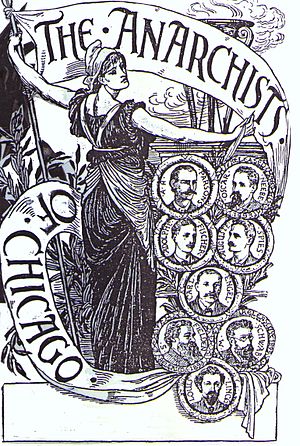
Anarchists in the Russian Revolution
Anarchists in the Italian Factory Occupations
Anarchism and the Spanish Revolution
Anarchism in the Mexican Revolution
Modern schools
1911 Lima-Callao general strike
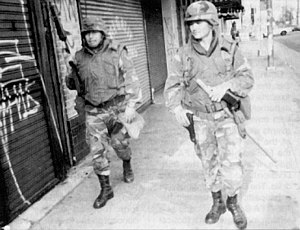



Anarchy in the German Revolution
Anarchy in the Russian Revolution
Anarchy in the Haitian Revolution
Cascadia Free State, 1995-6
Cathars, 11th to 14th centuries
English food riots in eighteenth century
English Peasants' Revolt of 1381
Kurdish democratic confederalists
Stop Huntingdon Animal Cruelty
The May-June Revolt in France, 1968
Zone to Defend (ZAD), 2012-present
Autonomous

2007 Lakota declaration of independence
2013 Mi'kmaq anti-fracking struggle
American Revolution and Anarchy
Cuban Revolution and Anarchism
Jewish armed anti-Nazi resistance
Mexican Revolution and Anarchy
Limited
Unsorted
1903 Macedonian revolt
1905–1907 Russian Revolt
1910 Mexican revolution
1960 student revolts
Parisian urban gardeners
Cantonalist Revolt of 1873-1874
Organizations


[File:Iwwlogo.svg| Industrial Workers of the World



"SNCC without knowing about anarchism as philosophy embodied the characteristics of anarchism." -Howard Zinn[9]
"The real question at issue is not organization versus non-organization, but rather, what kind of organization. What different kinds of anarchist organizations have in common is that they are developed organically from below, not engineered into existence from above." -Murray Bookchin[10]
Active Anarchist/Anti-Authoritarian
Historical Anarchist/Anti-Authoritarian
Autonomous
Unsorted
Everyday Anarchy
''I think we have to talk about educating the people for critical consciousness about what anarchy is. I would also say that, in practice, many more Americans are anarchists than would ever use that term." -bell hooks.[11]
"If there’s a line to get on a crowded bus, do you wait your turn and refrain from elbowing your way past others even in the absence of police? If you answered 'yes', then you are used to acting like an anarchist!" -David Graeber[12]
"How would you feel if you discovered that the society in which you would really like to live was already here, apart from a few little local difficulties like exploitation, war, dictatorship and starvation?" -Colin Ward[13]

Anarchist
Anti-Authoritarian
Participatory
Autonomous
Stonehenge Free Festival, 1972-1985 (one month a year), 30,000 people
Woodstock Festival, 1969, 40,000 people
Vienna Psychoanalytic Society's child guidance service
Horizontal organization in British architecture
Unsorted
Mexican colonial proletarias
Peruvian 'barriadas
Tunisian gourbivilles
Indian bus tees
Turkish gecekondu
Venezuelan ranchos
Prestolee School
Institueion Libre de Enseiianza
Residential College for Students
1960 student revolts
Freetown playground
Skrammellegeplad playgrounds
Robinson Crusoe playgrounds
Brixham fishing cooperative
Brora mining cooperative
Standard tractor factory
Durham worker-managed mines
Gheel mental health care
Synanon
Claimant's Union
Eyes on the street
Nonhuman Anarchy
"Everything is connected, absolutely everything. There are many aboriginal groups that will tell you stories about how all the species in the forests are connected, and many will talk about below-ground networks." -Sm’hayetsk Teresa Ryan[14]
"The basic premise in the ontology of wildness translates into anarchy, where the raison d'etre of everything and everyone - living or non-living, human or nonhuman, child or adult, male, female, intersexual, bisexual, or asexual, whatever the species, ethnicity, or race (all of which are important classifications for civilization only) is simply to be and to enjoy being. In wilderness, the world exists for its own reasons, its space and time uncontrolled, solely its own, regardless of whether it was created by an external divine will or generated through its own exploded forces." - Layla AbdelRahim[15]
"As I watch the Robins and Cedar Waxwings fill their bellies, I see a gift economy in which abundance is stored “in the belly of my brother.” Supporting a thriving bird community is essential to the well-being of the Serviceberry and everyone else up the food chain. That seems especially important to an immobile, long-lived being like a tree, who can’t run away from ruptured relationships. Thriving is possible only if you have nurtured strong bonds with your community."-Robin Wall Kimmerer[16]
" From autocatalytic chemical processes to cells, from living bodies to galaxies, we find a universe filled with structures exhibiting self-organizing dynamics... [A]n atom is a self-organizing system as well. Each atom is a storm of ordered activity. This invisible power assembling the energy into a particular constellation is the atom's identity. A galaxy, too, is an autopoietic system, organizing its stars into a nonequilibrium process and drawing forth new stars from its interstellar materials." -Brian Swimme and Thomas Berry [17]
"The forest has always been my teacher in peace, in diversity in democracy. Diverse life forms, small and large, moving and immobile, above ground and below, with wings, feet or leaves, find their place in the forest. The forest teaches us that in diversity lie the conditions of peace, the realization of democracy." -Vandana Shiva[18]
"If we recognize that every ecosystem can also be viewed as a food web, we can think of it as a circular, interlacing nexus of plant-animal relationships (rather than a stratified pyramid)...Each species, be it a form of bacteria or deer, is knitted together in a network of interdependence. A predator in the web is also prey, even if the 'lowliest' of organisms merely makes it ill or helps to consume it after death." -Murray Bookchin[19]
Animal Societies
Central American squirrel monkey
Earth and Ecology
Evolution of translucent worms
Utricularia-algae-zooplankton feedback
Cosmos, Physics, and Chemistry
Fictional Anarchy
"We live in capitalism, its power seems inescapable – but then, so did the divine right of kings. Any human power can be resisted and changed by human beings." -Ursula K. LeGuin[20]
Anarchist
Anarres (The Dispossessed)
Mars (Mars trilogy)
San Francisco (The Fifth Sacred Thing)
Anti-Authoritarian
Haudenosaunee (The Years of Rice and Salt by Kim Stanley Robinson)
Kesh (Always Coming Home)
Nowhere (News from Nowhere)
The Shire (The Lord of the Rings)
Autonomous
- ↑ Maia Ramnath, Decolonizing Anarchism: An Antiauthoritarian History of India's Liberation Struggle (AK Press, 2011), 6.
- ↑ Silvia Federici, "Global Anarchism: Provocations" in No Gods, No Masters, No Peripheries: Global Anarchisms, ed. Barry Maxwell and Raymond Crib, (Oakland: PM Press, 2015), 350-351.
- ↑ "Gord Hill, Indigenous Artist and Anarchist," Crimethinc, 1 August 2017, https://crimethinc.com/2017/08/01/an-interview-with-gord-hill.
- ↑ David Graeber and David Wengrow, "How to change the course of human history, Eurozine, 2 March 2018, https://www.eurozine.com/change-course-human-history/.
- ↑ Paths in Utopia (Boston: Beacon Press, 1958), ch. 10.
- ↑ Subcomandante Marcos, "Why We Chose the Weapon of Resistance" in Our Word is Our Weapon (New York: Seven Stories Press, 2001), 160.
- ↑ Joshua Stephens, “Palestinian Anarchists in Conversation: Recalibrating anarchism in a colonized country,” Institute for Anarchist Studies, 19 July 2013, https://anarchiststudies.org/palestinian-anarchists/.
- ↑ https://www.iiipublishing.com/politics/elf.htm.
- ↑ Howard Zinn, "Anarchism Shouldn't Be a Dirty Word," AlterNet, 16 May, 2008, http://www.alternet.org/story/85427/howard_zinn%3A_anarchism_shouldn't_be_a_dirty_word.
- ↑ Murray Bookchin, "Anarchy and Organization", Libcom.org, http://libcom.org/library/anarchy-organization-murray-bookchin.
- ↑ bell hooks, "How Do You Practice Intersectionalism?", The Anarchist Library, https://theanarchistlibrary.org/library/randy-lowens-how-do-you-practice-intersectionalism.
- ↑ David Graeber, "Are You an Anarchist? The Answer May Surprise You!", The Anarchist Library, http://theanarchistlibrary.org/library/david-graeber-are-you-an-anarchist-the-answer-may-surprise-you.
- ↑ Colin Ward, Anarchy in Action.
- ↑ Ferris Jabr, "The Social Life of Forests", New York Times, 2 December, 2020, https://www.nytimes.com/interactive/2020/12/02/magazine/tree-communication-mycorrhiza.html.
- ↑ Layla AbdelRahim, Children's Literature, Domestication, and Social Foundation (New York: Routledge, 2015), 3-4.
- ↑ Robin Wall Kimmerer, "The Serviceberry: An Economy of Abundance," Emergence Magazine, 2020, https://emergencemagazine.org/story/the-serviceberry/.
- ↑ Brian Swimme and Thomas Berry, The Universe Story: From the Primordial Flaring Forth to the Ecozoic Era - A Celebration of the Unfolding of the Cosmos (New York: HarperCollins Publishers, 1992), 75.
- ↑ Vandana Shiva, "Foreword" in Derrick Jensen and George Draffan, Strangely Like War: The Global Assault on Forests (White River Junction: Chelsea Green Publishing Company, 2003), vii.
- ↑ Murray Bookchin, The Ecology of Freedom: The Emergence and Dissolution of Hierarchy (Palo Alto: Cheshire Books, 1982), 26.
- ↑ "Ursula K Le Guin's speech at National Book Awards", The Guardian, 20 November 2014, http://www.theguardian.com/books/2014/nov/20/ursula-k-le-guin-national-book-awards-speech.










